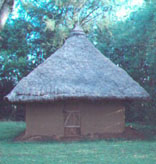12/12/2003


WECHE MOKADHO
JEXJALUO ****
;
Michael Mundia Kamau
P.O. Box 58972
00200 City Square
Nairobi
Kenya
27th November 2003
What’s British govt’s stand on lifting of Mau Mau ban?
I refer to Peter Alexander’s scathing letter titled “What’s British
govt’s
stand on lifting of Mau Mau ban?”, appearing in the “East African
Standard”
of 27th November 2003.
This is a letter written more in appreciation of Mr. Alexander’s
exemplary
coverage of “Kenya’s secret history” covered extensively in the “Sunday
Standard” last year, rather than the contents of his above letter per
se.
It was not made clear what Mr. Alexander’s background is, but he made
some
very informative and invaluable revelations in his coverage of “Kenya’s
secret history”.
For instance, Mr. Alexander revealed why and how the British were able
to
overcome the 11 year old Nandi resistance that ran through the years
1895
to1905. This was because the administration of the Kenya-Uganda railway
was
moved from the British Foreign office to the British Colonial office,
which
had much more extensive experience and resources. This was how Colonel
Richard Meinertzhagen as able to organise one of the biggest military
expeditions ever seen in East Africa. The British colonial government
was
under intense pressure to have the Kenya-Uganda railway line start
paying
for itself.
It was also revealed that the legendary Nandi Orkoiyot, Koitalel arap
Samoei, had descendants, one of whom was called Barserion arap Manye.
Barserion arap Manye was involved in the contemporary struggle for
independence as a result of which he was detained by the British
colonial
government and released in the year 1961. 1961 is very recent, and it
is
surprising that the world knows little of Barserion arap Manye, a son
of the
lengendary Koitalel arap Samoei. Did Barserion arap Manye have a
family, and
where are they now ? What about the other descendants of Koitalel arap
Samoei ? As diverse lobbies in Kenya call for official government
recognition of the Nandi resistance, why hasn’t there been any mention
of
Barserion arap Manye ?
Mr. Alexander and the “Sunday Standard” are therefore credited for
uncovering very vital information on Kenya’s history, and it is
unfortunate
that the series on “Kenya’s secret history”, came to an abrupt end mid
last
year. This letter therefore also doubles as an appeal to both Mr.
Alexander
and the “East African Standard”, to revive this crucial series. In
addition,
the public needs to make use of the vital resources at the Kenya
National
Archives and elsewhere, in a nationwide bid to piece together forgotten
pieces of our rich heritage.
Michael Mundia Kamau
Ka in gi mari moro ma di wandik ka to
orni
Akelo nyar Kager
jaluo@jaluo.com
Daher winjo dwondi in bende,
iwinjo?
Inyalo oro twak kod weche manyien ne: Mig. Ajos wuod Atiga
WuonAbila@jaluo.com
GALAMORO : Riwruok mar JOLUO e Piny Ngima, orwaku uduto mondo ubed e kanyakla mar burani. Ornwa nyingi gi nondi kaka obedo. Riwruok e teko joka Nyanam.
